Mostly today’s post is about a nest building Marsh Wren but I’m including an unexpected hawk I also found on my way out to the auto tour loop.
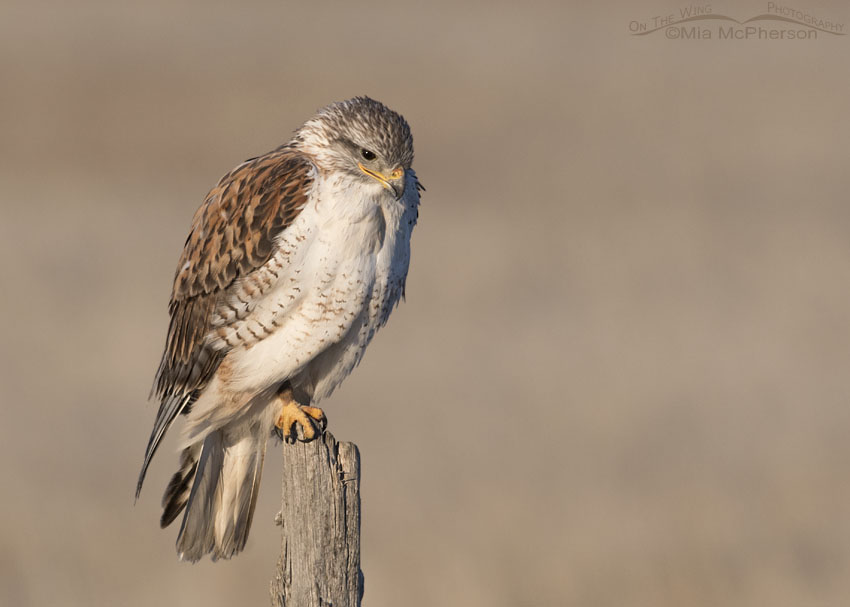 Ferruginous Hawk in early morning light – Nikon D500, f7.1, 1/1250, ISO 640, Nikkor 500mm VR with 1.4x TC, natural light, not baited
Ferruginous Hawk in early morning light – Nikon D500, f7.1, 1/1250, ISO 640, Nikkor 500mm VR with 1.4x TC, natural light, not baited
Yesterday found me heading to Bear River Migratory Bird Refuge before the sun had come up, the radar showed very few clouds and I was itching to see what migrants might be found at the refuge.
Before even getting to the auto tour route I spotted a bird to the west that I thought might be a Short-eared Owl when I first saw it from a long distance because I’d expect to see one there and I could see the chest of the bird was light colored. Instead it was an unexpected Ferruginous Hawk, unexpected because I’ve never found a Ferruginous Hawk out there on the flats on the way to the auto tour route. I had a great time photographing this bird until another vehicle went by and the hawk took flight.
On the north side of the auto tour route I saw my first of the season Yellow-headed Blackbirds, on the west side my first of season Clark’s and Western Grebes and there were loads of both the blackbirds and the grebes. I saw that some of the Tundra Swans are still hanging around.
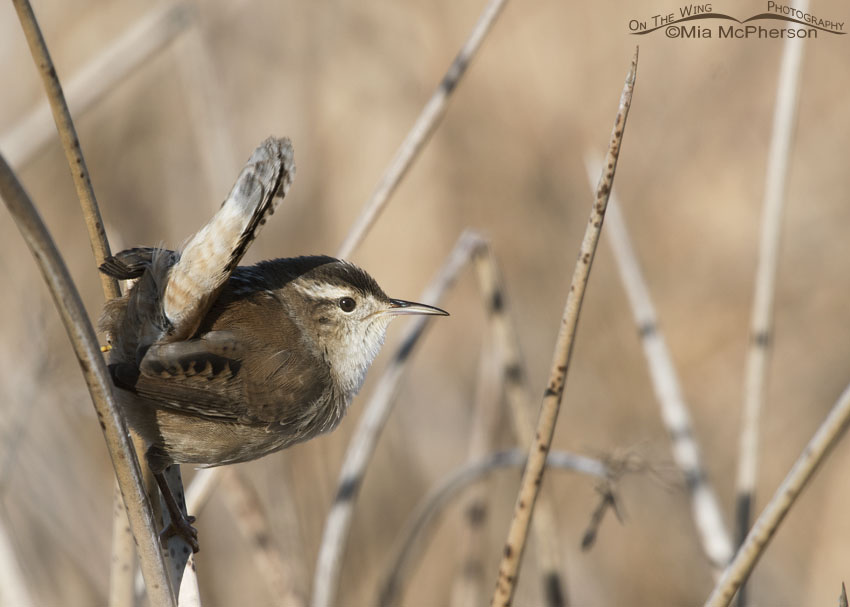 Saucy little Marsh Wren – Nikon D500, f7.1, 1/1000, ISO 400, Nikkor 500mm VR with 1.4x TC, natural light
Saucy little Marsh Wren – Nikon D500, f7.1, 1/1000, ISO 400, Nikkor 500mm VR with 1.4x TC, natural light
Then I spent an hour and 23 minutes photographing a very industrious and extremely vocal Marsh Wren building a nest and singing his little heart out while he was doing it. I say he because only the males sing on territory and build the nest. About the only time the wren was quiet was when he was deep in the vegetation looking for nesting material or when he was placing nesting materials on the nest itself.
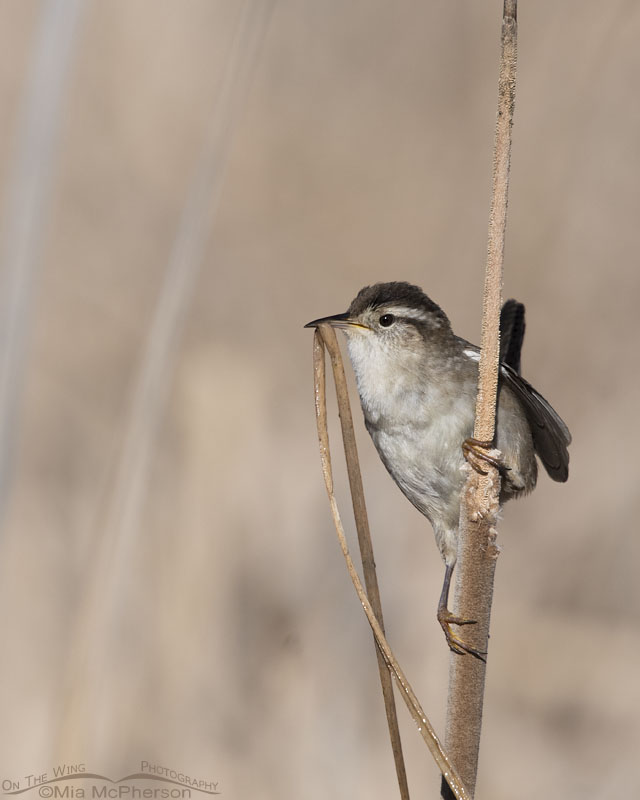 Marsh Wren with nesting material – Nikon D500, f7.1, 1/3200, ISO 400, Nikkor 500mm VR with 1.4x TC, natural light
Marsh Wren with nesting material – Nikon D500, f7.1, 1/3200, ISO 400, Nikkor 500mm VR with 1.4x TC, natural light
It seemed like the Marsh Wren preferred using wet nesting materials, I did not see him fly in with dry vegetation even one time. The wren usually flew straight to the nest with the nesting material but a few times he perched out in the open before heading to the clump of cattails the nest was in. I’m happy I was able to photograph him with nesting materials in his beak.
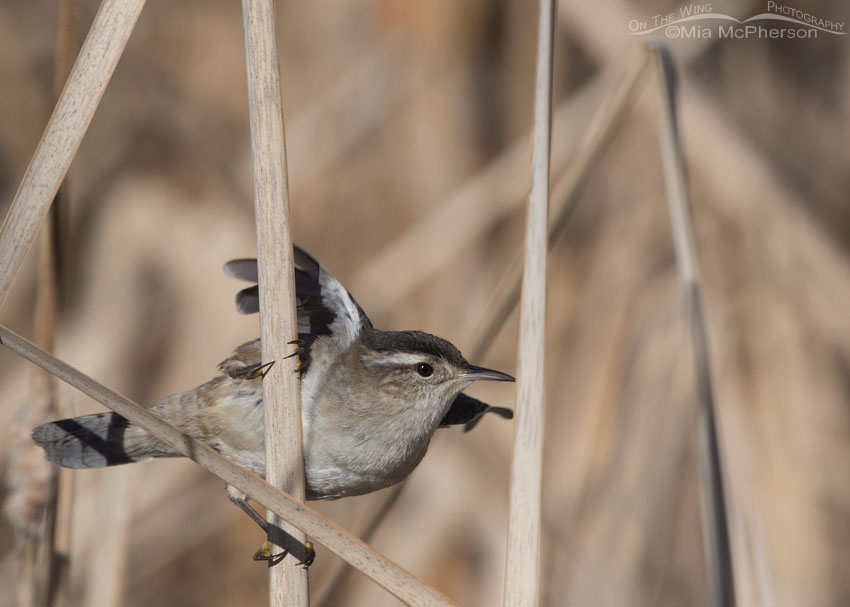 Marsh Wren lifting off from a cattail – Nikon D500, f7.1, 1/2500, ISO 400, Nikkor 500mm VR with 1.4x TC, natural light
Marsh Wren lifting off from a cattail – Nikon D500, f7.1, 1/2500, ISO 400, Nikkor 500mm VR with 1.4x TC, natural light
I tried to photograph the wren in flight with the nesting material and I did take a few images that showed him flying with it but these little birds fly extremely fast and some of those photos were much, much softer than I’d like and some were an absolute blurry mess.
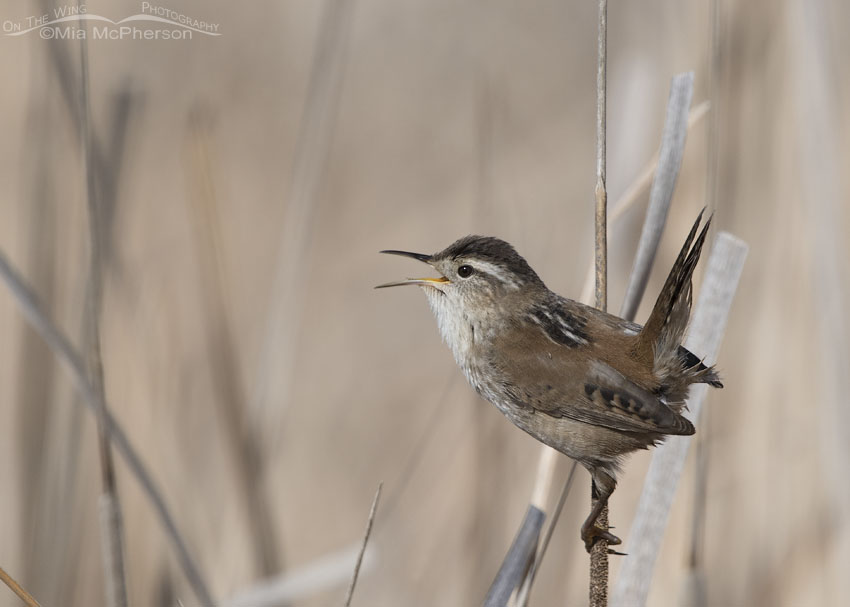 Marsh Wren singing on his territory – Nikon D500, f7.1, 1/2500, ISO 400, Nikkor 500mm VR with 1.4x TC, natural light
Marsh Wren singing on his territory – Nikon D500, f7.1, 1/2500, ISO 400, Nikkor 500mm VR with 1.4x TC, natural light
In between gathering nesting materials and weaving the nest the Marsh Wren would sing, most of the time a clear view of the wren was obstructed by vegetation but a few times he did perch out in the open. I love hearing these birds, especially during the breeding season.
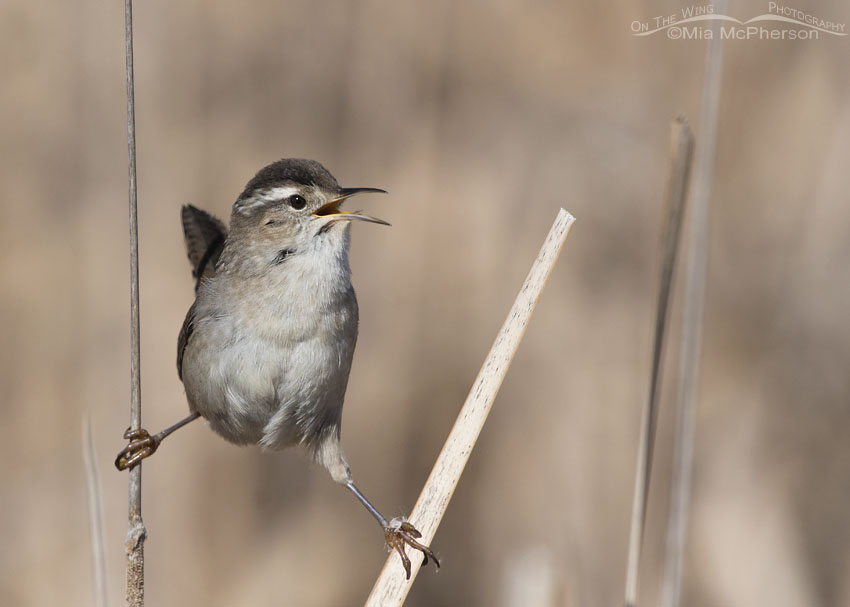 Marsh Wren singing near its nest – Nikon D500, f7.1, 1/2500, ISO 400, Nikkor 500mm VR with 1.4x TC, natural light
Marsh Wren singing near its nest – Nikon D500, f7.1, 1/2500, ISO 400, Nikkor 500mm VR with 1.4x TC, natural light
I also saw the wren gathering cattail fluff to line the nest with while I photographed him. Male Marsh Wrens build several nests, and while one may be used the others are dummy nests and I don’t know if I was seeing him building a dummy nest or not. They use a lot of energy building the nests in spring.
I had a great time observing and photographing this Marsh Wren yesterday.
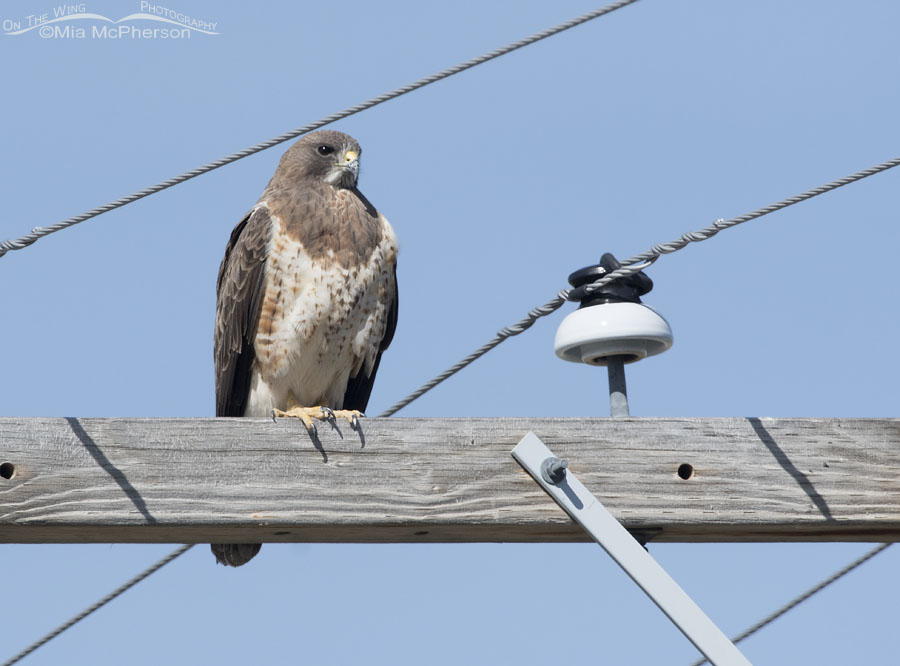 First of Year Swainson’s Hawk – Nikon D500, f7.1, 1/1600, ISO 400, +0.7 EV, Nikkor 500mm VR with 1.4x TC, natural light, not baited
First of Year Swainson’s Hawk – Nikon D500, f7.1, 1/1600, ISO 400, +0.7 EV, Nikkor 500mm VR with 1.4x TC, natural light, not baited
And… ta daaa, I also spotted my first of year (FOY) Swainson’s Hawk not far from the refuge visitor center. I did not expect to see a Swainson’s Hawk at all yesterday because I had checked eBird and the closest Swainson’s that have been reported this month are down near Las Vegas so I was very surprised to see this hawk. I should say though that when I tried to report this sighting on eBird it showed up as rare for this time of the year and even after reporting it yesterday afternoon the eBird reviewer for this area hasn’t approved or opened this sighting up for all to view. The reviewer might not have had time to do that yet, they are volunteers that are as busy as the rest of us are.
It was a wonderful morning spotting both the Ferruginous and Swainson’s Hawks, seeing quite a few other first of season birds and spending time photographing the Marsh Wren while he was busy constructing his nest. What a great day.
Life is good.
Mia


Fantastic potpourri, the Marsh Wren photos are my favorite. I am catching up on all the blogs I follow. I saw many Golden Eagles, Swainson’s and Ferruginous hawks on my travel to Nebraska this week. They were mostly along I-80 so I did not stop to take photos. I will have to go to BRMBR this Sunday, right now after a quick 3 day trip, 2 of those days spent driving to Kearny, Ne. I don’t want to get near my car for a while!
Love the wren series…and the hawks are magnificent. Thanks Mia.
What an absolutely wonderful morning. For you, and for us.
Thank you.
Superb photographs!
Two raptors I have not seen.
I love those images of the Marsh Wren! We only see them during winter and they have such wonderful pugnacious attitudes. Great shots of nest building!
Those images of the wren capture their sauciness beautifully!!! For such shrimps they sure are feisty lttle devils!!! Glad you spotted the hawk!
What a great day! I can feel the spring return of life exploding from your posting. Happy Easter!
Sounds like you were able to”refill your bucket”. Beautiful images from yesterday!
What a beauty that little Marsh Wren is.
Congratulations on that Swainson’s Hawk. The Ferruginous Hawks left our area about two weeks ago, so they should be showing up on their breeding grounds about now. This past Sunday I observed and photographed a flock of at least 50 Swainson’s Hawks in a field about 30 miles northwest of Tucson. After about 1/2 hour they all took flight, formed a kettle, and drifted north. Spring is here!